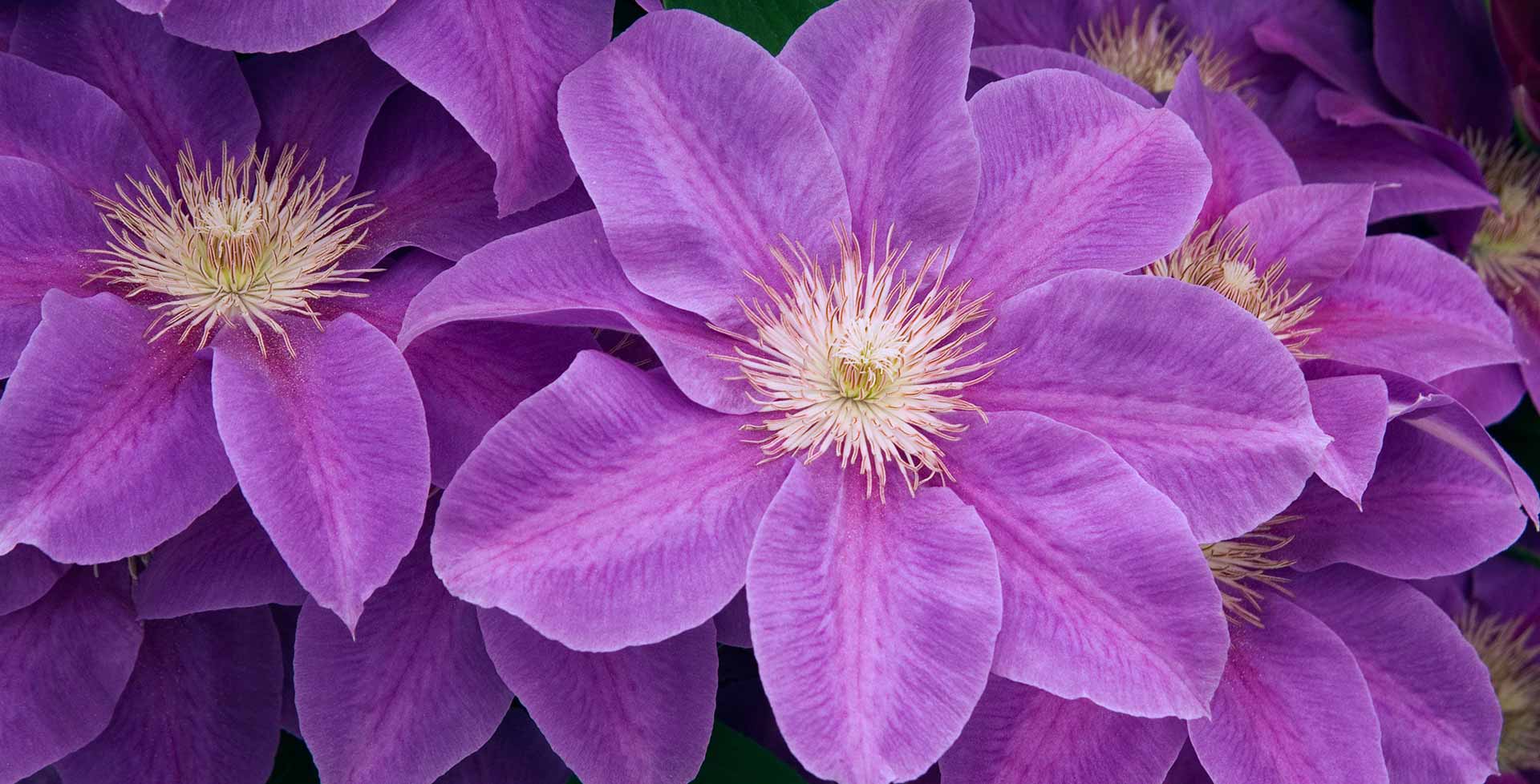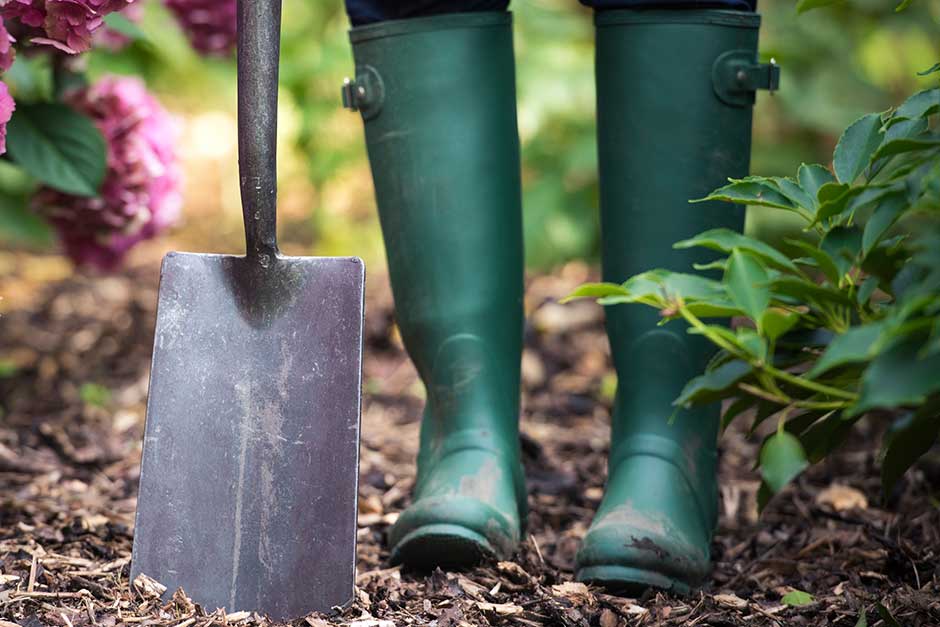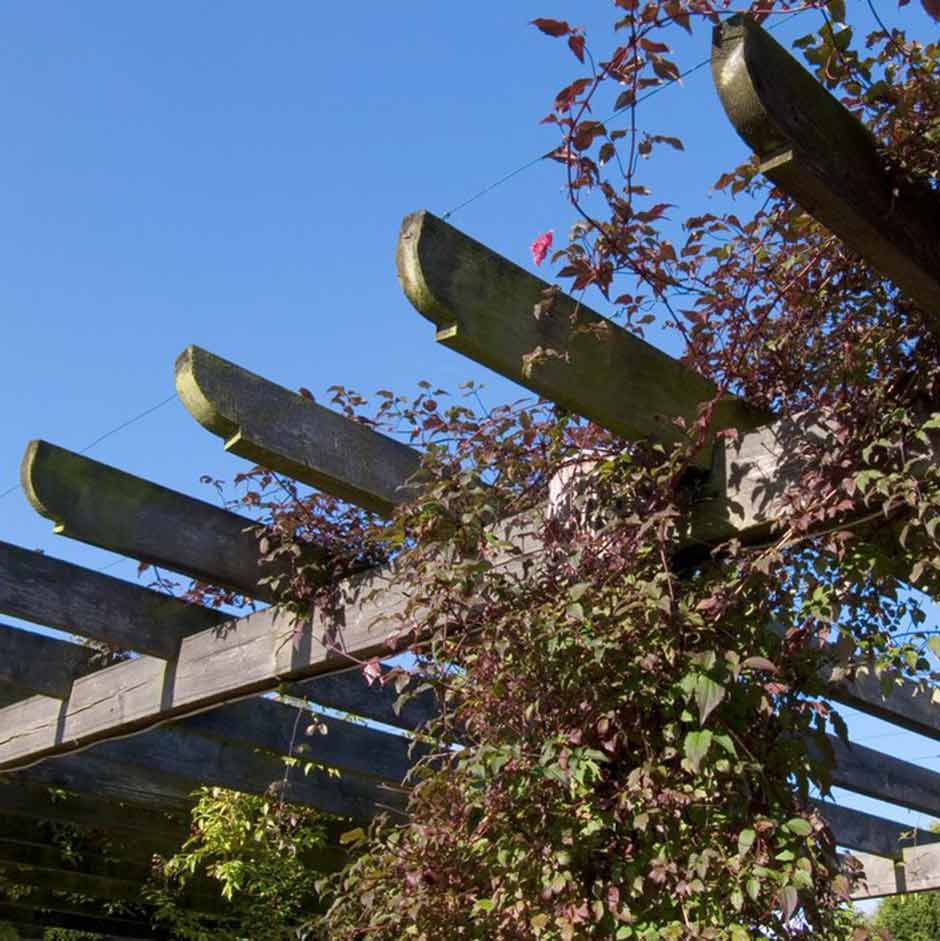
Introducing...
Early-summer-flowering clematis
These valuable climbers produce a flush of showy flowers in late spring and early summer, with many producing another flush of smaller, single flowers in late summer. Perfect for making a feature of a trellis or support, their twice-flowering habit is a bonus where space is limited.
Looks
These clematis bear large, star-shaped flowers, mostly in shades of white, lilac-pink and blue-purple. A number of popular cultivars, like ‘Nelly Moser’ and ‘John Warren’ have distinctive striped petals, while double forms, like ‘Arctic Queen’ have a central mass of petals. Most grow to between 2-4m high, with smaller-growing cultivars like ‘Bees’ Jubilee’ making good container plants.
Likes
These clematis will grow best in deep, fertile, moist but well-drained soil. Most will grow happily in full sun or partial shade, though double forms are often best in sun.
Dislikes
Clematis won’t thrive in very wet soils, nor poor soils that dry out in summer. They dislike their roots getting too hot, so plant the base of the clematis in light shade or provide shading with other plants or a dressing of pebbles. Flowering will be poor in a very shady spot.
Did you know?
The showy flowers of double forms, which have multiple layers of petals, appeared originally as natural mutations on single-flowered hybrids.
Growing guide

How to grow clematis
All the information you’ll need to grow & care for clematis in your garden.
Early-summer-flowering clematis we recommend
Clematis 'The President' (EL)
clematis 'The President'
- 1.5–2.5 metres
- 0.5–1 metres
Clematis 'Generał Sikorski' (EL)
clematis 'General Sikorski'
- 2.5–4 metres
- 1–1.5 metres
Clematis 'The President' (EL)
clematis 'The President'
- 1.5–2.5 metres
- 0.5–1 metres
Clematis 'Generał Sikorski' (EL)
clematis 'General Sikorski'
- 2.5–4 metres
- 1–1.5 metres
Useful advice
Clematis problems: frequently asked questions
Clematis: pruning

Pergolas
Clematis: green petal
Get involved
The Royal Horticultural Society is the UK’s leading gardening charity. We aim to enrich everyone’s life through plants, and make the UK a greener and more beautiful place.